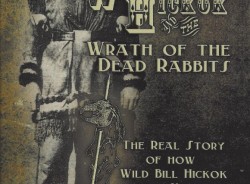BRIDGES OF DUBLIN by Annette Black and Michael B. Barry – Book Review by Mary McWay Seaman
BOOKKEEPING by Mary McWay Seaman (Celtic Connection, Denver, August 2016
BRIDGES OF DUBLIN by Annette Black and Michael B. Barry (ISBS, Portland, OR, 2015, 256 pages, paperback, $39.95)
This volume’s glorious pictorial tour of twenty-four bridges spanning Ireland’s Liffey River (within Dublin city and county) is lush with full-page color photographs and drawings. Equally fascinating are discussions of bridge-building’s history – tales of engineering born from both necessity and convenience. It is noted that “Dublin today is fortunate to have a rich and outstanding collection of bridges that range from the historic stone of the oldest, the Mellows Bridge of 1768, to the Aeolian elegance of the Samuel Beckett Bridge of 2009 and the newest, the Rosie Hackett Bridge of 2014.” The primary bridge-building materials before the nineteenth century were wood and stone; “Wood has been used as far back as the Neolithic era to cross rivers. It is estimated that 17,000 years ago, covered logs, laid flat, were used for the first wooden bridges.” The authors provide a compelling history of bridge designs and components through the centuries and across the globe, emphasizing that “Throughout time the Liffey bridges of Dublin have not been merely passages across a great river, but architectural gems, keepers of history and destinations of note.” Interestingly, “During the first millennium, the Liffey in Dublin was initially crossed by three fords. Two of these fords were located . . . between the present-day Four Courts and Capel Street. The third ford was situated at Island Bridge.”
Many current bridges stand on ancient foundations that opened societies to trading opportunities in a bigger world with new products, services and scientific advances. Not long after the Vikings landed on Rathlin Island in 795 AD (and deployed to Dublin shortly thereafter), “things became more sophisticated. There are accounts that they built a timber bridge across the river, near their mud and wattle settlement.” However, “It was the Normans, masters of stone fortification who built the first stone bridge in Dublin.” (The Vikings and the Normans were outsiders who became shovel-ready insiders in a generation or two.) Yet bridge building grew slowly over the centuries: “The city itself had only one bridge in 1610 . . . by around 1700 three new and two replacement bridges had been built.” Construction and engineering details weave within discussions infused with riveting side stories. The authors emphasize that “Architectural treasures of Georgian Dublin (1714-1830) include the simple but elegant Ha’penny Bridge and the distinctive King’s Bridge. It was during this era that Gandon built the Carlisle Bridge where O’Connell Bridge now stands. Rebuilds too took place from far flung Lucan and Chapelizod, to emerging suburbs at Island Bridge as well as in the heart of the city itself.” The glory days of canals called for more bridges, and iron was used in the late eighteenth century, then steel in the late nineteenth century as well as concrete. Fiber-reinforced polymers were introduced in the 1970s and 1980s. Our focus will be on five bridges.
The Lucan Bridge, situated in Lucan town within a few miles of Dublin, “may be over two centuries old, but it still carries modern road traffic over the Liffey,” and its site has seen bridges “from as far back as the reign of King John in the 13th century . . .” When the Lucan Bridge was built, it was “the longest single arch masonry bridge in Ireland, a record that still holds.” The bridge today was built of squared limestone in 1813, and at 34 metres, it is “the longest single arch masonry bridge in Ireland, a record that still holds.”
Construction of the Sean Heuston Bridge began in 1827 on Dublin’s western edges. It was financed by public subscription to commemorate King George IV’s 1821 visit to Dublin. Known as the “Kingsbridge,” it opened in 1829, and is “Possibly Ireland’s oldest cast-iron road bridge . . .” It was renamed in 1941 for the executed hero of the 1916 Easter Rising. (It had previously been the Patrick Sarsfield Bridge, named after the seventeenth-century hero.) Now it is “One of the more decorous bridges over the Liffey, with its elegant cast-iron sides . . . a favourite of many a Dubliner who, showing their long memories, even today still refer to the ‘Kingsbridge.’”
The authors relate that O’Connell Bridge (1880) replaced the old Carlisle Bridge of 1794 and construction took two-and-a-half years to complete its classical design. The old arches “were demolished and the new section was built upon the remains of the old piers.” Notably, the “classical design mimicked the bridge of old yet improved upon that narrow, humpbacked structure by being almost three times as wide and having a lower gradient.” Charles V. Harrison sculpted new representations of the Atlantic and Anna Livia to replace old keystones. However, in May 1880 disputes arose over the bridge’s naming. Power struggles erupted between the Port and Docks Board which had commissioned the bridge, and Dublin Corporation which claimed naming rights. The Board installed a plaque calling it the Carlisle Bridge, and Dublin Corporation threatened to paint the name “O’Connell on every stone and lamp post of the bridge.” Daniel O’Connell (1775-1847) was a revered political leader who promoted Catholic emancipation and repeal of the Act of Union with Great Britain, and naming the new bridge for him was “designed to break the tradition of naming Dublin’s bridges and streets in honour of English viceroys.” Continuing restoration work delivers the historic bridge as “hardly a mere structure – more a destination at the very heart of Dublin.”
The Rosie Hackett Bridge of 2014 was the “first ever purpose-built bridge giving priority to public transport.” It is currently the only Liffey River Bridge named for a woman who fought for women’s rights. Hackett, born in 1892, had lived in a tenement near where the bridge now stands, and had fought for better working conditions for her fellow women factory workers. (No workers’ paradise there.) As a member of the Irish Citizen Army she “saw action in 1916 at the College of Surgeons with Countess Markievicz and Michael Mallin. Released from Kilmainham Gaol, she refocused her considerable talents into re-forming the Irish Women Workers’ Union and served the trade union movement for the rest of her working life.” Architecturally, the Rosie Hackett “bridge is simple in design and sensitive to its surroundings – a low-arched, single-span, concrete structure . . . minimally intrusive upon the surrounding historic quayside and the river itself.”
The Ha’Penny Bridge dates from 1816 and is the “first pedestrian-only crossing of the Liffey and the sixth oldest in the family of Liffey bridges.” It is a “single elliptical arch structure” that Black and Barry believe symbolizes the “quirky, friendly, jaunty nature of Dublin city to visitors and citizens alike.” Constructed of cast iron, it was renamed the Liffey Bridge in 1923. The bridge’s restoration was completed in 2001, and in 2003, “it was recognized by a European Union Cultural Heritage/Europa Nostra Award. Europe’s most prestigious heritage prize.” This glorious volume, a perfect gift for all ages, will be treasured through the generations. We only wish these bridges could talk!








